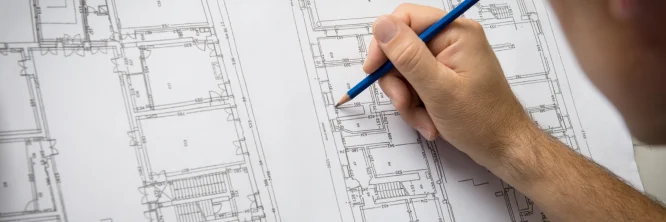Design-build contracts are legally binding agreements that outline the terms and conditions of a design-build project. In a design-build project, a single entity, the design-build contractor, is responsible for both the design and construction of a project. This approach offers several advantages, including streamlined project delivery, cost savings, and improved quality. This article will delve into the key components of design-build contracts, the benefits of this project delivery method, and the steps involved in creating a comprehensive contract.
What is design-build?
Design-build is a project delivery method that combines the design and construction phases of a project under a single contract. Unlike traditional design-bid-build methods, where design and construction are separate contracts, design-build offers a more integrated and collaborative approach. The design-build contractor is responsible for the entire project, from the initial concept to the final handover.
Why choose design-build?
There are numerous reasons why owners and developers choose design-build for their projects:
- Single Point of Responsibility: The design-build contractor is solely responsible for the design and construction of the project, simplifying the chain of command and reducing potential conflicts.
- Accelerated Schedules: By overlapping the design and construction phases, design-build can expedite project timelines.
- Improved Quality: A collaborative approach between the design and construction teams can lead to a higher-quality product.
- Cost Certainty: Many design-build contracts include a guaranteed maximum price, providing the owner with a fixed price for the project.
- Risk Mitigation: The design-build contractor assumes a greater portion of the project risk, offering the owner greater peace of mind.
How do you create a design contract?
Creating a comprehensive design-build contract requires careful consideration of several factors:
- Define the Scope of Work: Clearly outline the scope of work to be performed, including all design and construction elements.
- Identify the Parties: Specify the owner, the design-build contractor, and any other involved parties.
- Establish Payment Terms: Determine the payment schedule, including any guaranteed maximum price, progress payments, and retention.
- Specify Contract Documents: Include all relevant contract documents, such as plans, specifications, and schedules.
- Address Risk Allocation: Clearly define the allocation of risks between the owner and the design-build contractor.
- Include Dispute Resolution: Specify the method for resolving disputes, such as mediation or arbitration.
- Address Change Orders: Outline the process for managing changes to the project design and scope of work.
Components of a design-build contract
A typical design-build contract will include the following components:
- Introduction: This section identifies the parties involved and the purpose of the agreement.
- Scope of Work: A detailed description of the work to be performed.
- Payment Terms: The terms and conditions for payment, including the guaranteed maximum price if applicable.
- Schedule: A project schedule outlining key milestones and deadlines.
- Specifications: Technical specifications for materials, equipment, and workmanship.
- General Conditions: General terms and conditions governing the contract, such as insurance requirements, warranties, and indemnification.
- Special Conditions: Provisions specific to the project, such as site conditions or local regulations.
- Appendices: Supporting documents, such as drawings, schedules, and permits.
Design-build flexibility
One of the significant advantages of design-build is its flexibility. The type of contract can be tailored to meet the specific needs of the project. Common types of design-build contracts include:
- Lump Sum: A fixed price contract for the entire project.
- Guaranteed Maximum Price (GMP): A contract with an upper limit on the total project cost.
- Cost Plus Fee: A contract where the owner reimburses the contractor for actual costs plus a fee.
Sustainability considerations in design-build
Sustainability is becoming increasingly important in the construction industry. Design-build projects can incorporate sustainable practices to reduce environmental impact and promote energy efficiency. Key sustainability considerations include:
- LEED Certification: Pursuing LEED certification can demonstrate a commitment to sustainability and improve project marketability.
- Energy Efficiency: Incorporate energy-efficient materials, systems, and technologies to reduce energy consumption.
- Water Conservation: Implement water-saving measures, such as low-flow fixtures and rainwater harvesting.
- Waste Management: Develop a comprehensive waste management plan to minimize waste generation and maximize recycling.
- Material Selection: Choose sustainable materials with low environmental impact.
Performance-based contracting
Performance-based contracting is a type of design-build contract where the contractor is incentivized to deliver a project that meets or exceeds specific performance criteria. This approach can lead to improved project outcomes and reduced risks. Key performance metrics may include:
- Energy efficiency: Energy consumption per square foot.
- Water efficiency: Water consumption per square foot.
- Indoor air quality: Levels of pollutants and contaminants.
- Occupant satisfaction: Surveys and feedback from building occupants.
Technology integration in design-build
Technology plays a crucial role in modern construction projects. Design-build projects can leverage technology to improve efficiency, collaboration, and decision-making. Key technologies include:
- Building Information Modeling (BIM): BIM provides a digital representation of the project, enabling better visualization, coordination, and analysis.
- Construction Management Software: Software tools can help manage project schedules, costs, and resources.
- Mobile Technology: Mobile devices can be used for field reporting, document management, and communication.
- Virtual Reality (VR): VR can provide immersive experiences for project visualization and stakeholder engagement.
By integrating sustainability considerations, performance-based contracting, and technology, design-build projects can deliver more sustainable, efficient, and successful outcomes.
Design-build contracts offer a streamlined and efficient approach to project delivery. By combining the design and construction phases under a single contract, owners can benefit from accelerated schedules, improved quality, and cost certainty.
When considering a design-build project, it is essential to:
- Select a qualified design-build contractor.
- Develop a clear project scope.
- Create a detailed contract document.
- Establish a collaborative relationship with the contractor.
By following these recommendations, owners can maximize the benefits of design-build and ensure the successful delivery of their projects.






